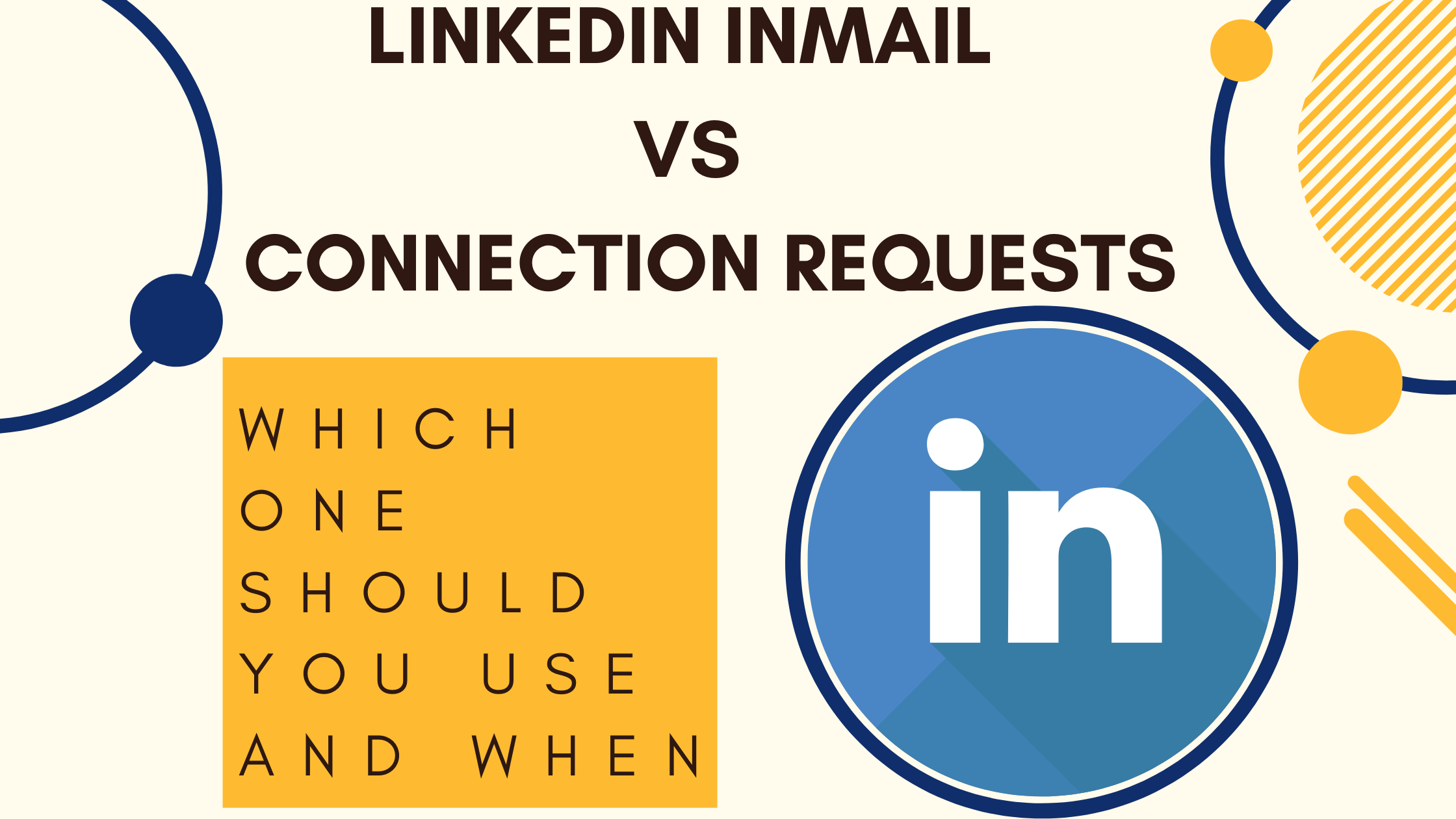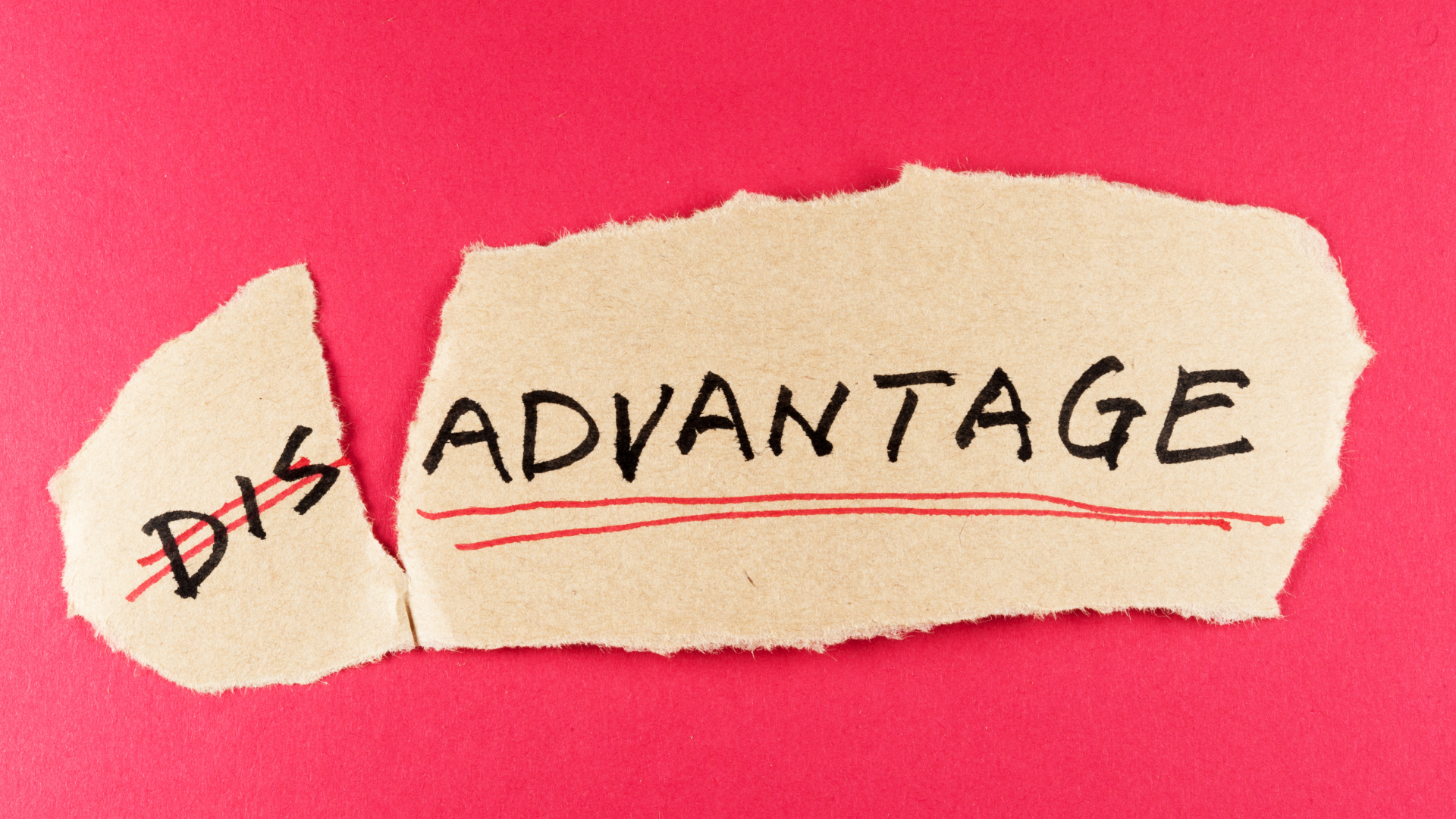
INTRODUCTION
If I ask you to name a platform for connecting businesses that you can call “your own,” you will certainly say LinkedIn!
Because LinkedIn includes a wide selection of business networking and lead generation tools and capabilities.
Connection requests and InMails are two of the most used technologies among them.
But which is the most effective at generating new leads? Which one is better for increasing platform sales?

Meaning Of Inmail In Simple Words
LinkedIn’s premium messaging service is called InMails.
They’ve promoted messages that enable you to target other LinkedIn users based on various criteria.
That implies you can’t utilize this function unless you have a LinkedIn premium account.
You can utilize the InMails feature with a premium account to contact all types of profiles and users on the network.
What makes it such an effective tool for expanding your network?
Here’s a link to the catalog!
- Targeted communications – You can send InMails to people who are most likely to benefit from your company.
- Enhanced engagement – Targeted communications delivered via InMails help you break through the clutter of one’s Inbox and increase the likelihood of a positive reaction.
- LinkedIn allows you to send InMails to anyone. As a result, you are not limited to people already in your network.
- LinkedIn provides InMail-supporting tools and metrics.
Meaning Of Connection Requests In Simple Words
A connection request on LinkedIn is an invitation to connect with others on the platform. If you send one to someone on LinkedIn and they accept, they will be your first-degree connections.
The most common technique to build your platform network is sending connection requests or invites. Furthermore, the connection request option does not require a premium LinkedIn account, making it an excellent tool for beginners.
The following are the key characteristics of a connection request:
- Direct access to your network’s second and third-degree connections Quick and easy Consistent flow of connections with LinkedIn’s
- ‘Grow your network’ page You can connect if you have the connection’s email address.
- Search for people and profiles you already know
The Uniqueness Of InMail That Run Its Sales
- You can take advantage of LinkedIn’s active status to send the InMail at the most reasonable times.
- Your Inbox may be clogged with commercial emails and other rubbish, and your email may get lost in the shuffle, but your InMail will never go forgotten.
- LinkedIn InMails are mobile-friendly, and its app offers a smooth user experience.
Sponsoring your LinkedIn InMail will help you attract more attention from your prospects.LinkedIn InMail has its benefits and hooks to entice you in, but is your pitch being sent and opened by your prospect, or are you squandering all of your hard work?
Email is a business essential. Thus it’s the best platform for any communication. We’re always on our phones, checking in on our personal and professional emails, which offers the sender the certainty that their message will be read.
According to a survey by Propeller CRM, typical email open rates range from 15.22% to 28.46%, depending on the industry.
But, in the case of LinkedIn InMails, can we state and prove the same?
Apart from selecting LinkedIn premium for LinkedIn InMails and paying $10 for a set number of InMail credits, LinkedIn members have another choice. You can pay more and sponsor your LinkedIn InMail for an additional fee.
Regular LinkedIn InMails will not produce the same results as emails but sponsored LinkedIn InMails to have a minimum open rate of 20%, which is the closest LinkedIn InMails come to Emails in terms of results.
Which One Does Exactly Have An Upper Hand Advantage

Everyone loves the term “FREE,” especially when it means more business for you. When compared to InMails, LinkedIn connection requests are free.
LinkedIn’s premium messaging service is called InMails.
They’ve promoted messages that enable you to target other LinkedIn users based on various criteria.
That implies you can’t utilize this function unless you have a LinkedIn premium account.
InMails, on the other hand, are completely free! You don’t have to pay anything to send them to open profiles.
But how can you tell whether there are any open profiles on LinkedIn?
Tips for identifying an OPEN PROFILE on LinkedIn?
LinkedIn’s Open Profile function allows you to send messages to your 2nd or 3rd-degree connections without spending your InMail credits. So, how can you know if a profile is open?
If you see the option to ‘Message’ by clicking on the ‘More’ icon beneath a person’s LinkedIn page, the profile is OPEN.
There’s a GOLDEN RULE to remember now:
Send an InMail instead of an Invite if a profile is open.
Why do I say this?
So, here’s how it works!
InMails allow you to send targeted messages to people who are most likely to benefit from your business.
- Stronger engagement – Targeted messages delivered via InMails help you break through the clutter of a recipient’s Inbox and increase the likelihood of a favorable reaction.
- LinkedIn provides InMail-supporting tools and metrics.
- Other noteworthy features of LinkedIn InMails that are difficult to overlook include:
- You can leverage LinkedIn’s active status function to send InMails at the appropriate time.
- Yours connect request and message may be buried in a sea of other promotional messages in your prospect’s Inbox, but InMails rarely go undiscovered.
Reasons Which Are Causing One To Fail
1 – LinkedIn and Microsoft have begun selling’sponsored’ Inmails to businesses. So now we’re getting awful mass reach outs that are effectively just SPAM. There’s no other way to describe it. LinkedIn sold our data to companies/people looking for someone with your specific title or in your specific region, and we were sold out. (There is a limit of 6 sponsored Inmails per calendar year, as determined by LinkedIn.) For sponsored Inmails sent to LinkedIn clients, LinkedIn estimates a 10% response rate.
2- Spammers conduct automated, bulk, poorly phrased, and poorly targeted outreaches to open-profile users (like my profile). It’s similar to LinkedIn’s commercial counterparts, except it’s free. Most of these employ an automation program to comb through ‘open-profiles’ and send out a templated, non-personal email.
I’m not completely against automation in outreach, and I’m not completely against Mar-tech; in fact, I enjoy it (most of the time); I don’t like it when it’s misused.
Most people haven’t been able to scale their use of LinkedIn or most other social media platforms to start good business discussions with potential purchasers or persons of interest. As a result, they opt for the spray-and-pray strategy. Why don’t we just send a slew of negative messages to many people and see who responds? This is a bad concept. (It’s similar to the connect and pitch brigade.) The other option for corporations is to pay #LinkedIn to do it via sponsored Inmail campaigns so they don’t feel awful about it. So, what do you think happens if all you get via Inmail are snarky messages? You stop looking, stop responding, and assume every one of them is SPAM.
Do you recall receiving an Inmail from a recruiter or someone wishing to speak with you about a new role or job opportunity? Your curiosity was peaked when you received an Inmail notification. How do you feel now when you get a notification you don’t know about who it is? It’s the same as the incoming phone call from that unlisted number if you’re like most people. It’s a huge sigh from within. We’re at it again, ugh.
What options do we have? Despite this, Inmail still has a role to play in or out of reach strategy, but one that is much smaller and hence less valuable than it once was. (#LinkedIn, are you listening?)
First and foremost. Ensure the message you’re sending is on point and relevant to the recipient. Please do some research and write down WHY you believe it is relevant to them now. You wouldn’t believe how many messages I receive simply mentioning. If you’re interested, we assist businesses in generating more leads, among other things. Even if it was, hey, thanks, but no, I’d respond if the approach was more personal, more authentic.
Make a mutual link, obtain a referral, leverage a referral, or provide a testimonial from someone in a similar field to stand out from the crowd. Make a phone call, send an email, look them up on Twitter, send them an original connection request, contact them on social media, and read over their profile, which is the most basic yet most disregarded method.
There are a few techniques to get around Inmails’ failure, but none will allow you to send 100 identical reach-outs at once. As a result, these strategies have a better chance of succeeding.
One final point. Connection requests are increasingly being utilized as a mass marketing tactic in the pseudo-EDM/ SPAM style. I believe that in a very short time, you will be required to supply an email address or anything similar for practically every valuable connection. Also, if you’re considering using connection requests as an EDM technique, keep in mind that you only have 5000-lifetime connection requests, and once they’re gone, they’re gone.
Techniques To Master Your InMail Strategy
To enhance the likelihood of a response, keep your LinkedIn InMail brief—150 words or less.
Personalize your message by looking for common interests or work experience on your prospect’s profile.
A concise, specific, and captivating subject line will grab their attention.
Instead of pitching a sale, use InMails to start a dialogue with a prospect.
- Add a call-to-action to the end of your message.
Following these tips ensures you craft InMails your prospects wish to respond to. Further, you can see the status of your sent InMails on the Sent InMail page.
- Accepted – The message has been read and accepted. You should’ve received a response from the recipient
- Declined – if the recipient declines your opportunity
- Pending – when the recipient is yet to reply to your message
Enough with the InMails; let’s talk about the disadvantages of Connection Requests.

It’s a bad idea to connect with a newly-targeted prospect on LinkedIn. Despite this, I continue to see “experts” in social selling advising sales staff to build connections—as a way to introduce themselves to prospects! But what if you didn’t need the connection in the first place?
What if your inability to connect kept you from receiving more responses and booking appointments? (hint: it’s) “All right, Molander. So what makes you think it’s not a good idea?”
1. It’s against LinkedIn’s terms of service.
2. Requests for connections are actually “blind” (do not support your context)
3. Requests are being abused more and more.
Requesting a connection may be a sensible initial step, but it is blind and cold. It’s also against LinkedIn’s terms and conditions, and it’ll get you fired.
LinkedIn aims to safeguard people from unsolicited correspondence, and you don’t know the other person. Yours!
In addition, an increasing number of consumers are falling victim to accepting a connection request from someone they don’t know–and then receiving a poorly-written pitch as a result. Some people disengage right away (like me). The problem is that you’ll never know if your prospect has been disconnected. It isn’t reported to you by LinkedIn!
Finally, LinkedIn makes it difficult (if not impossible) for your prospect to view the personalized connection invitation you gave them. Customers frequently accept without any context for doing so… All the meantime, we assume they read the personalized connection request.
This makes your “first contact” email message appear entirely out of context to the prospect, no matter how well-written.
How To Minimize This Drawback?
When prospecting, your goal is to pique the prospect’s interest in speaking with you. You won’t be able to speak with them unless you develop that desire. Period.
On LinkedIn, social selling is all about making prospects feel genuine curiosity about how you can help them. How you can help them solve an issue, ease suffering, avoid risk, or achieve a goal more quickly.
You’ll be in a better position to: identify when (and if) they’ll transact; uncover how many decision-makers are involved in picking you; have your connection request accepted (avoid going to jail! ), and efficiently nurture and close your lead once you’ve attracted them.
This is why it’s preferable to meet offline first and then connect on LinkedIn to continue (nurture) the conversation.
Once linked, you can send unlimited messages, keep track of prospects, and allow them to keep track of you, among other things. You don’t have to be concerned about any of this until the prospect does. You must first get their permission.
You’ll need them to be interested in connecting with you.
Conclusion
Is it, therefore, worthwhile to use LinkedIn InMail?
The purpose of today’s post was to explain what LinkedIn InMail is and how to use it.
It appears to be an expensive endeavor because you must purchase a premium LinkedIn account to use InMails. Given LinkedIn’s new limit on connecting requests, it is the safest way.
Sort your contacts by who has agreed to receive InMails. Only InMails, not connect requests, should be sent to those who have enabled it.
A good mix of LinkedIn InMails and connection requests can help you create a win-win situation for your company.
So, how do you feel about LinkedIn InMails and connection requests in general?


